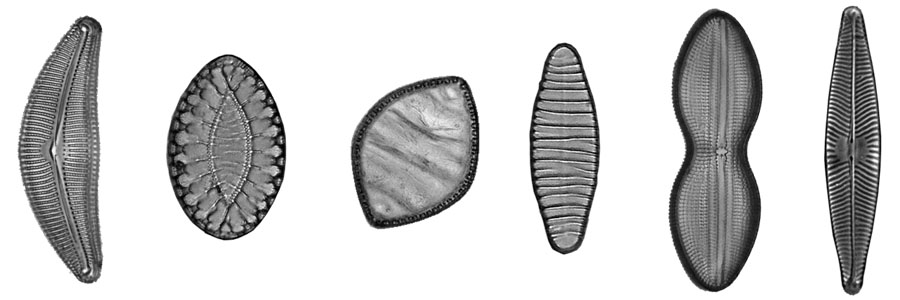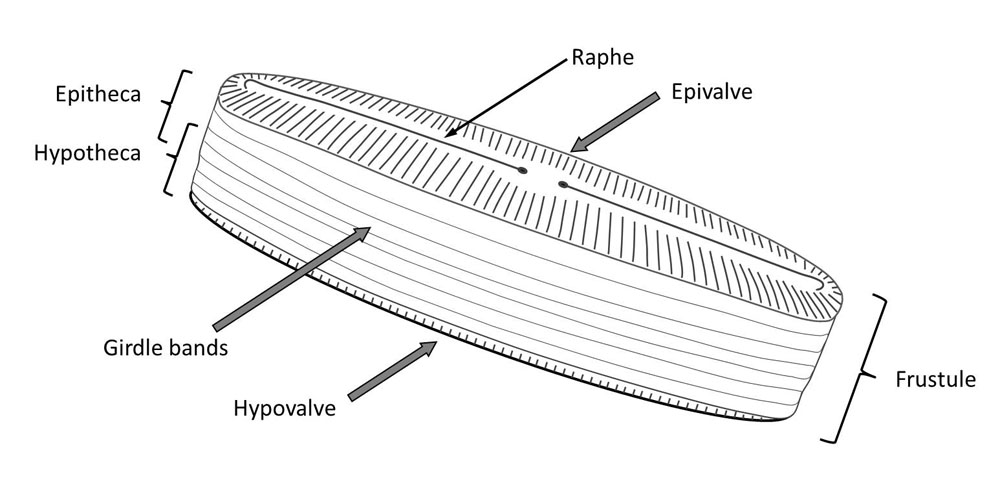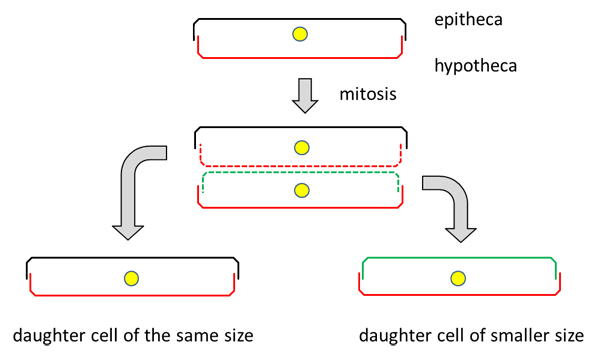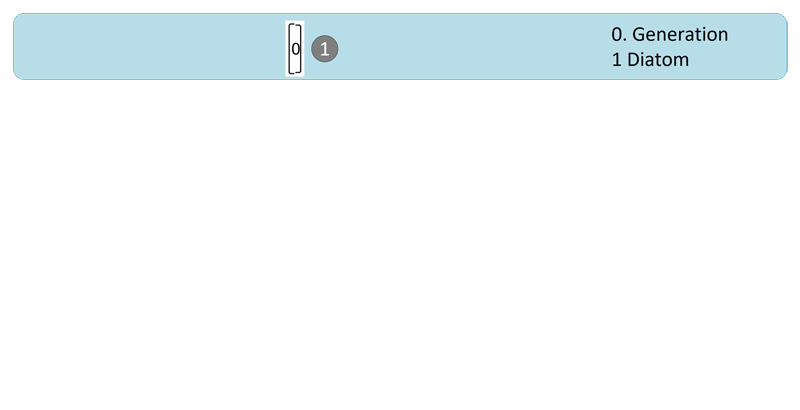
What are Diatoms?
Let me begin with a few statements about diatoms. In biological terms they form a class of single celled algae. It is characteristic of them that they live in a transparent house made of hydrated silica (SiO₂ + n H₂O), which is coated with an organic material. This exoskeleton (frustule) consists of two halves, the epitheca and the hypotheca. The structure is similar to a petri dish, with the epitheca overlapping the hypotheca. Each theca comprises of a more or less arched valve and the cingulum, a number of associated siliceous bands, the so-called girdle bands (see following picture).

According to their shape, diatoms are divided into centric diatoms that are radially symmetric and pennate diatoms that are bilaterally symmetric. Among the pennate diatoms there are many species which are able to glide over a substratum (see next page).
The size of diatoms ranges typically from a few microns up to about 2 millimetres. However in most cases diatoms are microscopic and require at least a light microscope to observe.
Diatoms are widespread and can be found in almost all fresh and saline waters like brooks, rivers, lakes and sea. Even moist soil serves as a possible habitat. Some diatoms are floating, others live at the bottom of a body of water.
Diatoms show an immense variety of shapes and structures. Their casing exhibit pores allowing them to exchange nutrient and waste. The valves of some diatoms have a slit, the so called raphe allowing them to move over surfaces of grains of sand, stones or the surface of aquatic plants.
Like all plants diatoms use photosynthesis to gain solar energy. Apart from chlorophyll a and c, fucoxanthin serves as photosynthetic pigment which gives diatoms a golden-brown colour.
There is a huge taxonomic diversity with hundreds of diatom genera. One finds different estimates on the number of recent species. It may be 100,000 or even more.
Diatoms reproduce by asexual (vegetative) and sexual reproduction. When a cell divides (mitotic division), a smaller valve is re-formed, so that after the division one has one cell of the same size and a smaller one:

The following picture illustrates the vegetative reproduction over 5 generations:
Statistically, therefore, the size decreases (MacDonald-Pfitzer rule). When the smallest diatom reaches a minimal size, sexual reproduction is required to gain a cell of maximal size. In rare cases, there is also a vegetative cell enlargement.
The sexual reproduction of pennate diatoms has a great variety of variants. Diatoms are diploid, so they have a double chromosome set. By reduction division (meiosis) one or two haploid gametes are formed in each diatom, that is to say, germ cells with a simple chromosome set. In pennate diatoms isogamy prevails, in which the gametes are of the same size and are not flagellated. By fusion of the gametes a zygote or two zygotes with a double chromosome set are produced. Finally, each zygote grows to the auxospore and forms a new vegetative cell (initial cell) with two valves, which has the maximal size.
It is also possible that two gametes of the same gametangium will fuse into a zygote, from which the auxospore and the initial cell are formed. This self-fertilization is called automixis.
Furthermore, it was observed that an auxospore can mature without reduction division (asexual reproduction). In addition conjugation was discovered in pennate diatoms.
For details on the steps, see Round et. al. (2007). Terminology and pictures can be found in Irena Kaczmarska et. Al (2013).
F. E. Round; R. M. Crawford; D. G. Mann (2007), Diatoms: Biology and Morphology of the Genera, Cambridge University Press; 1 edition (2007)
Irena Kaczmarska , Aloisie Poulíčková , Shinya Sato , Mark B. Edlund , Masahiko Idei , Tsuyoshi Watanabe & David G. Mann (2013): Proposals for a terminology for diatom sexual reproduction, auxospores and resting stages, Diatom Research, DOI:10.1080/0269249X.2013.791344





